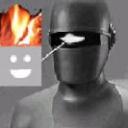Yahoo Answers is shutting down on May 4th, 2021 (Eastern Time) and beginning April 20th, 2021 (Eastern Time) the Yahoo Answers website will be in read-only mode. There will be no changes to other Yahoo properties or services, or your Yahoo account. You can find more information about the Yahoo Answers shutdown and how to download your data on this help page.
Trending News
What is the visual radius of the event horizon of a black hole?
In other words, when viewed from afar, what is the radius an observer see for the event horizon? Is it the photon sphere or is it larger?
(I'm sure someone, somewhere has figured this out. I don't know the answer)
*********
Dr. O,
I think, at a minimum, that the event horizon would be seen at a distance to be equal to the photon sphere. The photon sphere being 3/2 R.s, and the radius a photon would orbit a black hole.
I would expect that a photon originating from the backside of the black hole would take a path that follows a curve to eventually cross the photon sphere traveling in a direction towards the observer. This would expand the viewed "event horizon" out to the edge of the photon sphere at a minimum.
As I have not formally studied GR, your opinion would be welcome.
5 Answers
- ☮ VašekLv 51 decade agoFavorite Answer
I had to find my lecture notes to recall this formula for "escape cone" of a massless particle in Schwarzschild solution:
cos α > -(1-3M/r)*sqrt(1+6M/r)
(in units where Schwarzschild radius = 2M)
Taking a complement of this angle to π, we will get the maximal angle for photons emitted towards the black hole that will end in the singularity, i.e., the angular radius of the black hole:
cos β < (1-3M/r)*sqrt(1+6M/r).
For large r, let's neglect terms of order O(r^(-3)):
cos β_max = 1 - 27M^2/2 r^(-2) + O(r^(-3))
This gives β_max as
β_max = √(27)M/r + O(r^(-2))
which corresponds an apparent radius of
R = r tg β = 3√3*M
seen at the distance r.
This agrees well with what is written later in the lecture notes where the same number was computed as the maximal asymptotical impact parameter.
It could be a bit surprising that this is more than the radius of the photon sphere, 3M. However, if you are close to there, it actually looks MUCH larger, for example, at r=3M, the black hole is told to fill exactly one half of your visible range (you can see that the above formula gives cos β = 0, β = π/2, R = +∞).
- Billy ButtheadLv 71 decade ago
If a black hole could exist the radius of the event horizon would depend on it's mass.
A minimum size black hole would have a diameter of about 3 km. and if it could be seen you would have to be dangerously close as it would have a mass of about 2 of our suns..
The quantum effect would mandate that the thickness of the one way membrane could be no more than one-tenth of a mm thick,no matter the radius of the entity.
Unless a photon was emitted from the surface the black hole would remain invisible.
- Dr OctavianLv 61 decade ago
Well I'm fairly sure that from afar, the event horizon radius would look normal; since in the far-field limit we have less distortion of space...
As far as I am aware, the Schwarzschild radius r_h = 2m (m the 'geometric mass' with dimensions of length on relativistic co-ordinates) is based on a comparison of the energy density component of the field equations and equating this to the normal Newtonian potential but taking it to first order only; the first term is O(1/r), so and higher terms of at least order O(1/r^2), which would be small far from the origin - to cut a long story short (too late?), r = 2m is what (I think) we observe far from the black hole.
(I'll have to check this; but I think the logic goes something like
1 - 2m/r = 1 - 2*phi/r + O(1/r^2)
(where I think c = G = 1 here).)
As we got nearer, then we would have to start changing to appropriate co-ordinates to deal with the increasing curvature due to the removable singularity at the black hole.
... though I am willing to be corrected :) I've never thought about this before so this is only first impressions (and it's 1AM - I'll look at my notes tomorrow ;)
PS Felis - I just got it X) took me a while
- Al PLv 71 decade ago
Well, I'm thinking about a massless fly
with an escape velocity = c +r_hat
at rs. Then sometime later when I am
afar this fly hurts my eye real bad! Do
you think you could like my answer even
if I don't get BA?
- How do you think about the answers? You can sign in to vote the answer.





